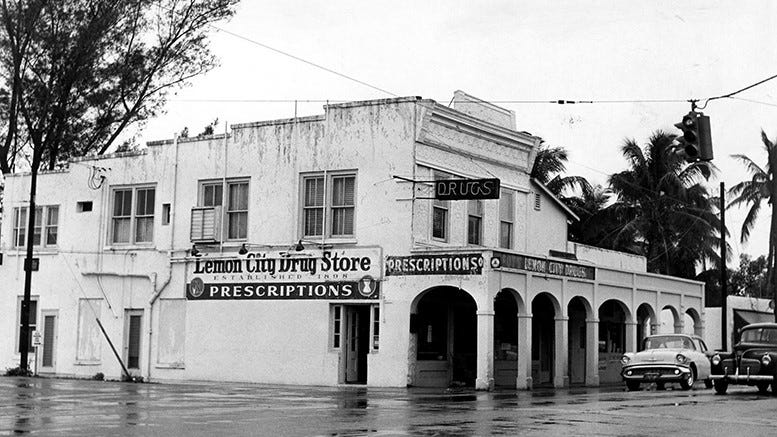Dr. John DuPuis and the Lemon City Drug Store
The story of Lemon City pioneer Dr. John Dupuis and the different institutions he established, such as the Lemon City Drug Store and White Belt Dairy, after arriving to South Florida in 1898.
When the Florida East Coast Railway pulled into the Lemon City depot at 11pm on October 29, 1898, a 23-year-old aspiring physician disembarked to begin a transformative journey in a sparsely populated area just five miles north of downtown Miami. After getting off the train, he approached the depot agent, a Mr. Wallace, who gave him directions toward the Connelly Hotel, the only place that offered lodging in Lemon City in 1898.
John G. DuPuis arrived with only clothes, some medical books and instruments, and an umbrella. He began his journey toward the hotel navigating through the darkness and fighting off the swarm of hungry mosquitos. He passed a four-room, two-story schoolhouse and noticed a dance happening on the second floor of this wood-framed building, which was the only activity from the train station to the inn. When he arrived at the hotel, the barking of the proprietor’s dog woke the night manager to open the door, allowing John to check-in and get his first night’s rest in Lemon City.
Over the next 57 years, this young man would mature, practice medicine, establish a dairy, pharmacy, high school, tourist camp, become a charter member of the Dade County Medical Association, and would establish a larger-than-life legacy in a neighborhood of Miami that very few contemporary South Florida residents remember as Lemon City. This is the story of Dr. John Gordon DuPuis and the concrete structure at 6045 NE Second Avenue which became the doctor’s medical office, family residence, and drug store when it was completed in 1902.
Keep reading with a 7-day free trial
Subscribe to Miami History to keep reading this post and get 7 days of free access to the full post archives.





